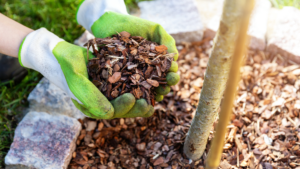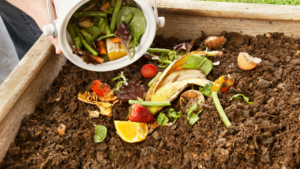
Protecting Your Trees and Shrubs from Summer Stress
Summer brings long days and plenty of sunshine, but it can also be a challenging time for your trees and shrubs. The intense heat combined with dry conditions creates stress that can affect their overall health. When trees and shrubs are stressed, they become more vulnerable to pests and diseases. Maintaining their well-being during the peak of summer is essential for a vibrant landscape.
Proper care during hot weather involves a mix of strategies, including adequate watering, mulching, and careful pruning. By understanding the unique needs of your plants and taking preventive steps, you can keep them strong and healthy. Simple practices like adding mulch and using correct watering techniques can make a big difference. Additionally, selecting the right plants for your local climate will help ensure they thrive even under harsh conditions.
Taking proactive steps now will pay off with healthier trees and shrubs that can better withstand summer stress. Whether you’re a seasoned gardener or just starting, knowing the best ways to care for your plants will help you enjoy a beautiful and resilient yard all season long. Let’s explore some practical tips and methods to protect your valuable trees and shrubs from the summer heat!

Understand Summer Stress on Trees and Shrubs
Summer stress is a common issue that affects many trees and shrubs. High temperatures and dry conditions can cause plants to lose water through their leaves faster than they can absorb it from the soil. This leads to wilting, leaf scorch, and even long-term damage. Plants under stress may also produce fewer flowers and fruits, reducing their overall beauty and productivity.
Signs of summer stress include yellowing leaves, dropping foliage, and stunted growth. It’s crucial to identify these symptoms early to take proactive steps. Understanding how summer heat impacts your trees and shrubs can help you protect them more effectively. By knowing what to look for, you can intervene before the damage becomes severe.
Protecting your plants from summer stress isn’t just about reacting to problems; it’s about preventing them in the first place. Implementing good care practices will keep your trees and shrubs healthier and more resilient during the hottest months of the year.
Choose the Right Trees and Shrubs for Your Climate
Choosing the right plants for your local climate is one of the best ways to ensure they thrive during summer. Some trees and shrubs are better suited to hot, dry conditions and will fare much better during the peak of summer. Native plants are often the best choice because they are adapted to the local environment.
Factors to Consider:
1. Heat Tolerance: Look for species known for their ability to withstand high temperatures.
2. Water Needs: Choose plants that require less water if your area has water restrictions.
3. Soil Type: Select trees and shrubs that match your soil type for better growth.
4. Local Pests: Opt for plants that are resistant to common local pests and diseases.
Choosing wisely will save you time, money, and effort in the long run. Plants that are well-suited to your environment will need less intensive care and are more likely to stay healthy throughout the season.
Watering Techniques for Healthy Trees and Shrubs
Proper watering is crucial to maintaining healthy trees and shrubs, especially during summer. Incorrect watering can either drown your plants or leave them thirsting for moisture. Below are some effective watering techniques to support your plants.
- Deep Watering: Water deeply rather than frequently. This encourages roots to grow deeper into the soil, making the plant more drought-resistant. Aim for soaking the soil to a depth of about 6-8 inches.
- Early Morning or Late Evening: Water your plants in the early morning or late evening. Avoid mid-day watering because the heat causes water to evaporate quickly.
- Watering at the Base: Focus watering at the base of the plant near the root zone, rather than spraying water on the leaves. This reduces the risk of fungal diseases and ensures that the roots get the moisture they need.
- Mulch and Watering: Use mulch to retain soil moisture. Mulch helps to slow down water evaporation and keeps the soil cool, reducing the amount of water you need to use.
Mulching to Protect Roots and Retain Moisture
Mulching is an excellent way to protect the roots of your trees and shrubs and help retain moisture in the soil.
Benefits of Mulching:
1. Moisture Retention: Mulch helps the soil retain water, reducing the need for frequent watering. It also keeps the soil cooler, which is beneficial during hot weather.
2. Weed Control: A good layer of mulch can prevent weeds from germinating and competing with your trees and shrubs for nutrients and water.
3. Soil Improvement: Organic mulches break down over time, adding beneficial nutrients to the soil.
4. Protection from Temperature Fluctuations: Mulch acts as an insulator, protecting roots from drastic temperature changes.

How to Mulch Effectively:
- Choose Organic Mulch: Materials like wood chips, bark, or compost work well.
- Proper Layering: Apply mulch in a 2-4 inch layer around the base of the tree or shrub but avoid piling it up against the trunk, as this can lead to rot.
- Refresh Annually: Add a new layer of mulch each year to maintain its effectiveness.
Using mulch correctly will go a long way in reducing summer stress on your trees and shrubs. By retaining moisture and improving soil health, mulch gives your plants a better chance to thrive during the hottest months.
Pruning Tips to Minimize Stress
Pruning is essential for maintaining the health of trees and shrubs, especially during summer. However, excessive pruning can create stress for plants, so it should be done carefully.
When to Prune:
- Early Spring: Prune before the summer heat hits to give plants time to heal.
- After Flowering: For flowering shrubs, prune just after they bloom to avoid cutting next year’s buds.
- Avoid Mid-Summer: Pruning during the hottest part of summer can stress plants further.
How to Prune:
1. Remove Dead or Diseased Branches: Start by removing any branches that are dead, diseased, or damaged. This helps prevent the spread of pests and diseases.
2. Thin Out Dense Areas: Thinning out dense areas of foliage improves air circulation and reduces the risk of fungal infections.
3. Shape Lightly: Shape the plant lightly to maintain its natural form and encourage healthy growth. Avoid heavy pruning, which can stress the plant.
Correct pruning helps trees and shrubs grow stronger and healthier. By following these tips, you can minimize plant stress and promote robust growth.
Nutrient Management and Fertilization
Proper nutrient management is crucial for keeping your trees and shrubs healthy during summer. Nutrients provide the essential elements that plants need to grow and withstand stress.
Essential Nutrients:
- Nitrogen: Promotes leafy green growth.
- Phosphorus: Supports root development and flower production.
- Potassium: Strengthens the overall health and aids in disease resistance.
Fertilization Tips:
- Use Slow-Release Fertilizers: These provide a steady supply of nutrients over time, reducing the risk of burning the plants.
- Follow Instructions: Always follow the manufacturer’s instructions for application rates and frequency.
- Balanced Fertilizers: Choose a balanced fertilizer with equal parts nitrogen, phosphorus, and potassium unless a soil test indicates different needs.
Organic Options:
- Compost: Adding compost enriches the soil with organic matter and improves its structure.
- Mulch: Organic mulch can also break down and add nutrients to the soil over time.
Maintaining proper nutrient levels will help your trees and shrubs cope with summer stress and thrive.
Identifying and Treating Pests and Diseases
Pests and diseases can be more problematic during summer when trees and shrubs are already stressed. Identifying and treating issues early can prevent significant damage.
Common Signs of Pests and Diseases:
- Discolored Leaves: Yellow, brown, or spotted leaves may indicate an issue.
- Chewed or Damaged Leaves: This is a sign of insect infestation.
- Fungus or Mold: White or black spots and powdery substances can suggest fungal infections.
Effective Treatments:
1. Insecticidal Soap: Effective for soft-bodied insects like aphids.
2. Neem Oil: Useful for controlling a variety of pests and diseases.
3. Remove Affected Parts: Pruning away affected branches can help stop the spread of disease.
Preventative Measures:
- Regular Inspections: Frequently check your plants to catch problems early.
- Proper Watering: Avoid over-watering, which can create conditions for fungi.
- Good Air Circulation: Ensure proper spacing and pruning to improve air circulation around the plants.
Addressing pest and disease issues promptly will keep your trees and shrubs healthy and less stressed during summer.
Creating Shade and Wind Barriers
Sun and wind can increase stress on trees and shrubs during summer. Creating shade and wind barriers can help protect them.
Ways to Provide Shade:
- Planting Strategically: Planting taller trees can create natural shade for smaller shrubs.
- Shade Cloths: Use shade cloths to provide temporary relief for plants during peak heat.
- Mulch: As mentioned earlier, mulch helps to cool the soil, providing some relief from heat.
Creating Wind Barriers:
1. Plant Windbreaks: Planting rows of trees or shrubs can block harsh winds.
2. Fences: Installing a fence can also serve as an effective wind barrier.
3. Mixed Borders: Using a combination of trees, shrubs, and bushes to form dense borders can protect delicate plants from wind stress.
Giving your plants some protection from harsh summer elements will help them stay healthier and less stressed. This ensures they continue to thrive even during the hottest months.
Soil Health and Aeration Best Practices

Good soil health is essential for trees and shrubs during summer stress. Start by testing the soil to know its pH level and nutrient content. Healthy soil provides the necessary support for root growth and access to nutrients and water.
Aeration helps improve soil health by allowing air, water, and nutrients to penetrate deeper. To aerate, use a garden fork or aerator tool to create small holes around the base of your trees and shrubs. This breaks up compacted soil and promotes root growth. Doing this in the early spring or late fall can prepare your plants for the summer heat.
Compost and organic matter are excellent for improving soil health. Adding compost to the soil enhances its structure and nutrient content, supporting healthy root systems. Aim to add a layer of compost around trees and shrubs each year.
Regular Monitoring and Early Intervention
Keeping an eye on your trees and shrubs is key to preventing summer stress. Regular monitoring helps you catch issues early before they become bigger problems.
- Weekly Checks: Walk around your garden once a week to inspect your plants. Look for signs of wilting, discoloration, or pest damage.
- Mulch and Weeds: Check your mulch levels and remove weeds. Mulch can decompose and thin out, needing a top-up to retain moisture effectively.
- Watering: Make sure your watering system is working properly. Adjust it based on the weather conditions and plant needs.
If you spot any problems, address them right away. Early intervention can save your plants from stress and potential damage.
Preparing for Extreme Weather Events
Extreme weather can take a toll on your trees and shrubs. Preparing in advance helps minimize damage.
- Storm Preparation: Trim any dead or weak branches that could break off during storms. Secure young trees with stakes to keep them upright in strong winds.
- Heat Waves: Use shade cloths to protect sensitive plants from intense sun. Keep up with regular watering.
- Drought: Conserve water by using soaker hoses or drip irrigation. These methods deliver water directly to the roots, reducing evaporation.
Preparing for extreme weather involves practical steps that can make a big difference in keeping your garden thriving.
Professional Services for Tree and Shrub Care
Sometimes the best way to protect your trees and shrubs is by hiring a professional. Tree and shrub care specialists have the expertise and tools needed to tackle any issues you may face.
- Consultation: Professionals can diagnose problems and give you a care plan.
- Pruning and Trimming: Experts know the best practices for pruning and can do it safely.
- Disease and Pest Treatment: They can identify and treat diseases and pests more effectively.
You might find that professional services save you time and help your garden flourish.
Summer Survival Guide: Protecting Your Trees and Shrubs
Protecting your trees and shrubs from summer stress involves a combination of techniques. It’s all about choosing the right plants, watering them properly, and keeping an eye out for any issues. Simple actions like mulching and aerating your soil can make a big difference.
And when unpredictable weather hits, having a plan in place can help keep your garden in top shape. Regular care and, when needed, professional help, will ensure that your trees and shrubs remain healthy and beautiful all summer long.
Ready to give your trees and shrubs the best care? Trust GroGreen to help you every step of the way. Contact us today to learn more about our expert tree and shrub care services in Frisco, TX!
